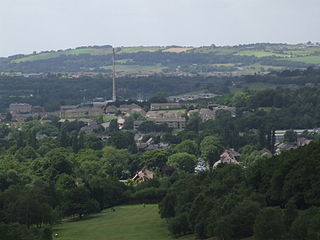| Personal information | |||||||||||||||||||||||||||
|---|---|---|---|---|---|---|---|---|---|---|---|---|---|---|---|---|---|---|---|---|---|---|---|---|---|---|---|
| Full name | Walter Hall | ||||||||||||||||||||||||||
| Born | 27 November 1861 Whitfield, Derbyshire, England | ||||||||||||||||||||||||||
| Died | 19 November 1924 (aged 62) Pitsmoor, Sheffield, England | ||||||||||||||||||||||||||
| Batting | Right-handed batsman | ||||||||||||||||||||||||||
| Bowling | Right-arm medium pace bowler | ||||||||||||||||||||||||||
| Domestic team information | |||||||||||||||||||||||||||
| Years | Team | ||||||||||||||||||||||||||
| 1882 – 1892 | Derbyshire | ||||||||||||||||||||||||||
| First-class debut | 1 June 1882 Derbyshire v Yorkshire | ||||||||||||||||||||||||||
| Last First-class | 17 June 1886 Derbyshire v Yorkshire | ||||||||||||||||||||||||||
| Career statistics | |||||||||||||||||||||||||||
| |||||||||||||||||||||||||||
Walter Hall (27 November 1861 – 19 November 1924) was an English first-class cricketer who played for Derbyshire from 1882 to 1892
First-class cricket is an official classification of the highest-standard international or domestic matches in the sport of cricket. A first-class match is of three or more days' scheduled duration between two sides of eleven players each and is officially adjudged to be worthy of the status by virtue of the standard of the competing teams. Matches must allow for the teams to play two innings each although, in practice, a team might play only one innings or none at all.

Derbyshire County Cricket Club is one of eighteen first-class county clubs within the domestic cricket structure of England and Wales. It represents the historic county of Derbyshire. Its limited overs team is called the Derbyshire Falcons in reference to the famous peregrine falcon which nests on the Derby Cathedral. Founded in 1870, the club held first-class status from its first match in 1871 until 1887. Because of poor performances and lack of fixtures in some seasons, Derbyshire then lost its status for seven seasons until it was invited into the County Championship in 1895. Derbyshire is also classified as a List A team since the beginning of limited overs cricket in 1963; and classified as a senior Twenty20 team since 2003. In recent years the club has enjoyed record attendances with over 24,000 people watching their home Twenty20 fixtures in 2017 – a record for a single campaign. The local derby versus Yorkshire at Chesterfield now regularly sells out in advance.
Hall was born at Whitfield, Derbyshire. In 1881 he was working at a print works at Glossop. [1] Hall made his first-class debut for Derbyshire in the 1882 season against Yorkshire in June when he took a wicket and a couple of catches, but failed to strike highly as an opener. He played one more match for the club that season as a tail-ender. Hall next played first-class in the 1885 season when he played five matches and achieved a best bowling performance of 6 for 43 against Lancashire. He played two matches in the 1886 season. Hall was a right-hand batsman and played 17 innings in 11 first-class matches with an average of 11.23 and a top score of 43. He was a right-arm medium pace bowler and took 14 first-class wickets at an average of 26.85 and a best performance of 6 for 47. [2]

Whitfield is a hamlet in Derbyshire, England. It is located 1 kilometre (0.6 mi) south of Glossop town hall, south of Glossop Brook between Bray Clough and Hurst Brook. The urban area stretches about 1 kilometre (0.6 mi) up the hillside. Whitfield was one of the original townships in the ancient parish of Glossop, and in the manor. The ancient township rose from 150 to 544 metres above mean sea level, and the upper part is part of the Peak District National Park. The highest point is Mill Hill which is on the Pennine Way.

Glossop is a market town in the High Peak, Derbyshire, England, about 15 miles (24 km) east of Manchester, 24 miles (39 km) west of Sheffield and 32 miles (51 km) north of the county town, Matlock. Glossop is near Derbyshire's county borders with Cheshire, Greater Manchester, South Yorkshire and West Yorkshire. It is between 150 and 300 metres above mean sea level, and lies just outside the Peak District National Park.
Derbyshire County Cricket Club in 1882 was the cricket season when the English club Derbyshire had been playing for eleven years. The team played eight first class matches and won one of them
With Derbyshire out of the championship in 1888, Hall continued to play regularly for the club until 1892. In 1893 he played for Blackpool against the Australians. Nine years later in 1902 he was playing in the Lancashire League for Accrington. [3]
Hall died at Pitsmoor, Sheffield, Yorkshire at the age of 62.

Pitsmoor is a former village, now a suburb of Sheffield. The name derives from Or-pits as, anciently, the main local industry was the mining of ore. The village falls within the Burngreave ward of the City.

Sheffield is a city and metropolitan borough in South Yorkshire, England. Historically part of the West Riding of Yorkshire, its name derives from the River Sheaf, which runs through the city. With some of its southern suburbs annexed from Derbyshire, the city has grown from its largely industrial roots to encompass a wider economic base. The population of the City of Sheffield is 577,800 (mid-2017 est.) and it is one of the eight largest regional English cities that make up the Core Cities Group. Sheffield is the third-largest English district by population. The metropolitan population of Sheffield is 1,569,000.


